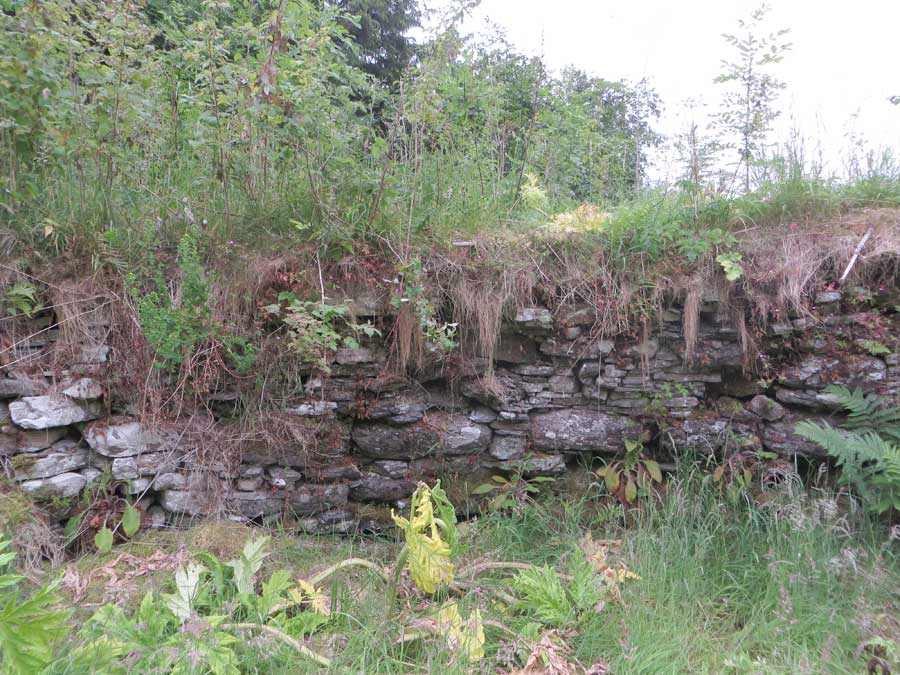Visited: September 23, 2018
Dun Borve, situated at an altitude of 180 metres on the hillside just east of the village of Borve, was probably the final outstanding broch I had yet to visit on the Isle of Skye. All too often it had been bypassed en route to other sites to the north and west of the island. But it proved somewhat trickier than I had anticipated.

There was no problem parking at the farm as advocated by Gladman (blue marker), but where was that stile? The hillside now seems to be isolated by high fences and padlocked gates, with ‘Danger do not enter’ signs attached. So I walked down the road west into the community of Borve, a few metres past the first two houses, to find the moorland just two grassy fields distant: and there were convenient gates for access (white markers on the map above).
Entering the first field from the road, head diagonally left almost to its far corner, where an open gate leads to the second field. Then head diagonally right to its far corner where another gate leads out to the hillside. Thereafter it is just a 400 metre walk to the broch. Time taken, about 15 minutes.
Although Dun Borve is an almost featureless pile of long displaced stones at close quarters, it is well worth venturing up the hillside from where it offers its most striking profile. Down at the broch, the only major structure is a row of a few large outer foundation blocks on the southwest. As stated below, the exercise is well worth the effort for the views the broch offers.
By the way, if you are using an up-to-date map of Skye, the A856 is no more. Both the former A856, and the section of the A850 from Portree to Borve, were reclassified as the A87 when the Skye Bridge opened in 1995.






































